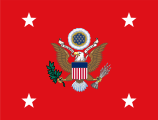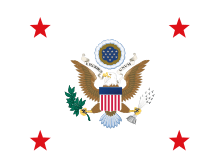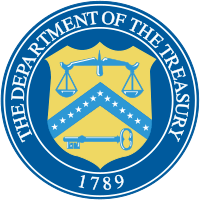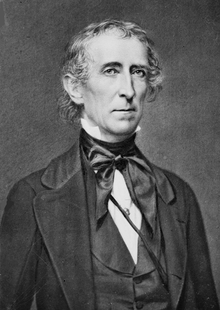John Canfield Spencer
| John Spencer | |
|---|---|
 | |
| 16th United States Secretary of the Treasury | |
|
In office March 8, 1843 – May 2, 1844 | |
| President | John Tyler |
| Preceded by | Walter Forward |
| Succeeded by | George M. Bibb |
| 17th United States Secretary of War | |
|
In office October 12, 1841 – March 4, 1843 | |
| President | John Tyler |
| Preceded by | John Bell |
| Succeeded by | James Madison Porter |
| Secretary of State of New York | |
|
In office February 4, 1839 – October 12, 1841 | |
| Governor | William H. Seward |
| Preceded by | John Adams Dix |
| Succeeded by | Archibald Campbell (Acting) |
| Speaker of the New York State Assembly | |
|
In office January 4, 1820 – June 30, 1820 | |
| Preceded by | Obadiah German |
| Succeeded by | Peter Sharpe |
| Member of the U.S. House of Representatives from New York's 21st district | |
|
In office March 4, 1817 – March 3, 1819 | |
| Preceded by | Archibald S. Clarke |
| Succeeded by | Albert H. Tracy |
| Personal details | |
| Born |
John Canfield Spencer January 8, 1788 Hudson, New York, U.S. |
| Died |
May 17, 1855 (aged 67) Albany, New York, U.S. |
| Political party |
Democratic-Republican (Before 1825) Whig (1825–1856) |
| Spouse(s) |
Elizabeth Scott Smith (m. 1809; his death 1855) |
| Relatives | Ambrose Spencer (Father) |
| Education |
Williams College Union College (BA) |
| Military service | |
| Allegiance |
|
| Service/branch |
|
| Years of service | 1812–1814 |
| Battles/wars | War of 1812 |
John Canfield Spencer (January 8, 1788 – May 17, 1855) was an American lawyer, politician, judge and United States Cabinet secretary in the administration of President John Tyler.[1]
Early life
John Canfield Spencer was born on January 8, 1788 in Hudson, New York. He was the oldest child of Ambrose Spencer, Chief Justice of the New York Supreme Court, and his first wife, Laura Canfield (1768–1807).[2] His sister, Abby Spencer (1790–1839), was married to Albany Mayor John Townsend.[3] His younger brother, William Augustus Spencer (1792–1854),[4] was married to Eleanora Eliza Lorillard (1801–1843), the daughter of Peter Abraham Lorillard.[5] His brother, Ambrose Spencer, Jr., was killed at the Battle of Lundy's Lane.[6]
After the death of his mother in 1807, his father married Mary Clinton (1773–1808) in 1808. Mary was the daughter of James Clinton and sister of New York Governor DeWitt Clinton.[2] After Mary's death later that same year, his father remarried again to Katherine Clinton (1778–1837), Mary's sister.[7]
He graduated from Union College in 1806, became secretary to New York Governor Daniel D. Tompkins in 1807, studied law in Albany, New York, and was admitted to the bar in 1809.[1]
Career
After commencing practice in Canandaigua, New York in 1809, Spencer became a master of chancery in 1811.[8]
During the War of 1812, Spencer served in the United States Army where he was appointed brigade judge advocate general for the northern frontier.[1] He was postmaster of Canandaigua, New York in 1814, became assistant attorney general and district attorney for the five western counties of New York in 1815 and was elected a Democratic-Republican to the United States House of Representatives in 1816, serving from March 4, 1817, to March 3, 1819.[8] He was a member of the committee that reported unfavorably on the affairs of the Second Bank of the United States.[1]
In 1819, he was the Clintonian candidate for U.S. Senator from New York,[9] but due to a three-cornered contest with Bucktail Samuel Young and Federalist Rufus King, no-one was elected. He was a member of the New York State Assembly from 1820 to 1822, and was Speaker in 1820. He was a member of the New York State Senate from 1825 to 1828.[1]
In 1826, Spencer served as a special prosecutor to investigate the disappearance of William Morgan who was arrested, kidnapped and murdered for exposing secrets kept by Freemasons, thus sparking the Anti-Masonic movement.[9] Spencer sided with the anti-Masons and was the author of a manuscript on Masonic rituals. He was again a member of the New York Assembly from 1831 to 1833 and moved to Albany, New York in 1837.[1] He edited the English edition of Alexis de Tocqueville's Democracy in America and served as Secretary of State of New York from 1839 to 1841.[10]
Federal government
In 1841, President John Tyler appointed Spencer to be Secretary of War in his administration.[9] As War Secretary, he proposed a chain of posts extending from Council Bluffs, Iowa to the Columbia River.[11] He also recommended that the government adhere to arrangements made by Army commanders in the field for compensation of the Creek Indians, who had been forced to move west of the Mississippi. In 1842, his nineteen-year-old son, Philip Spencer, a midshipman, was executed without court-martial along with two other sailors aboard the brig USS Somers for allegedly attempting mutiny.[8]
In 1843, Spencer was appointed Secretary of the Treasury after the resignation of Walter Forward. As Treasury Secretary, he was preoccupied with the tariff and believed that the deficit and other federal expenditures should be funded by duties on imports rather than by internal taxation, something he was forced to announce for the fiscal year in 1843.[12] The expenditures of the treasury had exceeded its receipts and he advocated additional import duties on articles such as coffee and tea. To help fund the federal deficit he engaged in controversial issues of Treasury Notes. He also continued to develop a plan, originally initiated by Forward, for a Board of Exchequer to keep and disburse public funds raised by duties. The Exchequer bill, which reflected continuing interest in some form of independent treasury system, failed due to a political conflict in the United States Congress.[9]
President Tyler nominated Spencer to be an Associate Justice of the Supreme Court twice, first in January 1844 to fill Smith Thompson's seat and again in June of the same year to fill Henry Baldwin's seat, but the Senate failed to confirm him both times.[13] As one of few northerners in an administration dominated by southern interests, Spencer found it increasingly difficult to serve in his cabinet post and resigned as Treasury Secretary in May 1844.[9] Thereafter, he returned to Albany.[8]
Personal life
In 1809, Spencer married Elizabeth Scott Smith (1789–1868). Together, they were the parents of several children, many of whom died in infancy or under unfortunate circumstances:[14]
- Mary Natalie Spencer (1810–1886), who married Henry Morris (1806-1854), son of Capt. Richard Valentine Morris and grandson of Lewis Morris, in 1831.[7]
- Laura Catherine Spencer (1812–1891), who married George W. Clinton (1807–1885), the 12th Mayor of Buffalo who was the son of DeWitt Clinton.[15]
- Eliza Abby Spencer (1815–1816), who died young.
- Ambrose Canfield Spencer (1817–1876), who was murdered in Linn, Missouri in 1876.[16]
- John Canfield Spencer, Jr. (d. 1845)
- Philip Spencer (1823–1842), who was executed for mutiny in 1842.[16]
- DeWitt Clinton Spencer (1830–1836), who also died young.
In Canandaigua, he lived for 36 years in a house at 210 Main Street, that was built by General Peter Buell Porter (1773–1844), the United States Secretary of War under John Quincy Adams, in about 1800.[17]
He died in Albany, New York on May 17, 1855. He was interred in Albany Rural Cemetery beside his wife, Elizabeth.[1]
Descendants
His grandson, through his daughter Mary, was Henry Lewis Morris (b. 1845), who married Anna Rutherfurd Russell,[18] the daughter of Archibald Russell and Helen Rutherfurd (née Watts) Russell.[7] They were the parents of Lewis Spencer Morris (b. 1884).[19][20]
His grandchildren, through his daughter Laura, included Elizabeth Spencer Clinton (1835-1918), Spencer Clinton (1839-1914), Catharine Clinton (1841-1881), and George Clinton (1846-1934).[21]
References
- Notes
- 1 2 3 4 5 6 7 "SPENCER, John Canfield - Biographical Information". bioguide.congress.gov. Biographical Directory of the United States Congress. Retrieved 15 August 2017.
- 1 2 Reynolds, Cuyler (1906). Albany Chronicles: A History of the City Arranged Chronologically, from the Earliest Settlement to the Present Time; Illustrated with Many Historical Pictures of Rarity and Reproductions of the Robert C. Pruyn Collection of the Mayors of Albany, Owned by the Albany Institute and Historical and Art Society. J. B. Lyon Company, printers. Retrieved 14 August 2017.
- ↑ "Lansing/Townsend/Spencer Family Papers 1717-1903" (PDF). albanyinstitute.org. Albany Institute of History & Art Library. January 2000. Retrieved 14 August 2017.
- ↑ Bolton, Theodore; Cortelyou, Irwin F. (1955). Ezra Ames of Albany: Portrait Painter, Craftsman, Royal Arch Mason, Banker, 1768-1836. New-York Historical Society. Retrieved 15 August 2017.
- ↑ History of the Buell Family in England: From the Remotest Times Ascertainable from Our Ancient Histories, and in America, from Town, Parish, Church and Family Records. Illustrated with Portraits and Coat Armorial. Society Library. 1881. pp. 216–217. Retrieved 14 August 2017.
- ↑ Brooke, John L. (2013). Columbia Rising: Civil Life on the Upper Hudson from the Revolution to the Age of Jackson. UNC Press Books. ISBN 9780807838877. Retrieved 15 August 2017.
- 1 2 3 Bergen, Tunis Garret (1915). Genealogies of the State of New York: A Record of the Achievements of Her People in the Making of a Commonwealth and the Founding of a Nation. Lewis Historical Publishing Company. p. 1144. Retrieved 15 August 2017.
- 1 2 3 4 Crosby, D.D., L.L.D., editor, Howard (1889). The Encyclopædia Britannica: Supplement 1884-1889. 9th Edition. New York | Philadelphia | London: J. M. Stoddart. p. 554. Retrieved 15 August 2017.
- 1 2 3 4 5 Katz, Bernard S.; Vencill, C. Daniel (1996). Biographical Dictionary of the United States Secretaries of the Treasury, 1789-1995. Greenwood Publishing Group. pp. 346–348. ISBN 9780313280122. Retrieved 15 August 2017.
- ↑ Tocqueville, Alexis de (2009). Tocqueville on America After 1840: Letters and Other Writings. Cambridge University Press. p. 466. ISBN 9780521859554. Retrieved 15 August 2017.
- ↑ Colby, Frank Moore; Sandeman, George (1913). Nelson's Encyclopaedia: Everybody's Book of Reference ... Thomas Nelson. p. 370. Retrieved 15 August 2017.
- ↑ Bell, William Gardner (1982). Secretaries of War and Secretaries of the Army: Portr. & Biograph. Sketches. Government Printing Office. p. 52. ISBN 9780160876356. Retrieved 15 August 2017.
- ↑ Chase, Salmon Portland; Niven, John (1993). The Salmon P. Chase Papers: Correspondence, 1823-1857. Kent State University Press. p. 107. ISBN 9780873385084. Retrieved 15 August 2017.
- ↑ "Spencer, John C. (1788-1855), Papers, 1835-1843" (PDF). shsmo.org. The State Historical Society of Missouri. Retrieved 15 August 2017.
- ↑ "STRICKEN IN A CEMETERY THE SUDDEN DEATH OF VICE CHANCELLOR CLINTON: STRUCK BY APOPLEXY WHILE ENGAGED INA BOTANICAL EXPEDITION — THE STORY OF A USEFUL LIFE". The New York Times. September 8, 1885. Retrieved 9 August 2016.
- 1 2 "COL. SPENCER'S MURDER.; HIS LIFE AND FAMILY HISTORY. INTERESTING REMINISCENCES OF THE MURDERED MAN THE SON OF PRESIDENTTYLER'S SECRETARY OF WAR HISBROTHER HANGED AT THE YARD-ARM OFA BRIG IN 1842". The New York Times. April 24, 1876. p. 5. Retrieved 14 August 2017.
- ↑ New York | City Guide. New York State Historical Association. 1940. p. 434. ISBN 9781623760311. Retrieved 15 August 2017.
- ↑ Social Register, New York. Social Register Association. 1901. p. 303. Retrieved 15 August 2017.
- ↑ The American Historical Magazine. The Publishing Society of New York. 1906. pp. 435–436. Retrieved 15 August 2017.
- ↑ "116 EAST 80TH STREET HOUSE (formerly Lewis Spencer Morris House)" (PDF). nyc.gov. Landmarks Preservation Commission. January 24, 1967. Retrieved 15 August 2017.
- ↑ MEMORIAL AND FAMILY HISTORY OF ERIE COUNTY NEW YORK, Volume I. 419-421 Lafayette Street: Winthrop Press. 1906–1908. Retrieved 15 August 2017.
- Sources
- John Canfield Spencer at the United States Army
- John Canfield Spencer at the United States Department of the Treasury
- "July 17 - Interview with John Canfield Spencer". In Search of Tocqueville. C-SPAN. Archived from the original on 4 November 2012. Retrieved 7 March 2016.
External links

- United States Congress. "John Canfield Spencer (id: S000727)". Biographical Directory of the United States Congress.
- Works by John Canfield Spencer at Project Gutenberg
- Works by or about John Canfield Spencer at Internet Archive
- John Canfield Spencer letter, c. 1848-1854, at the New York Public Library
- John Canfield Spencer at Find a Grave
| U.S. House of Representatives | ||
|---|---|---|
| Preceded by Micah Brooks, Archibald S. Clarke |
Member of the U.S. House of Representatives from New York's 21st congressional district 1817–1819 Served alongside: Benjamin Ellicott |
Succeeded by Nathaniel Allen, Albert H. Tracy |
| Political offices | ||
| Preceded by Obadiah German |
Speaker of the New York State Assembly 1820 |
Succeeded by Peter Sharpe |
| Preceded by John Adams Dix |
Secretary of State of New York 1839–1841 |
Succeeded by Archibald Campbell (Acting) |
| Preceded by John Bell |
United States Secretary of War 1841–1843 |
Succeeded by James Madison Porter |
| Preceded by Walter Forward |
United States Secretary of the Treasury 1843–1844 |
Succeeded by George M. Bibb |



